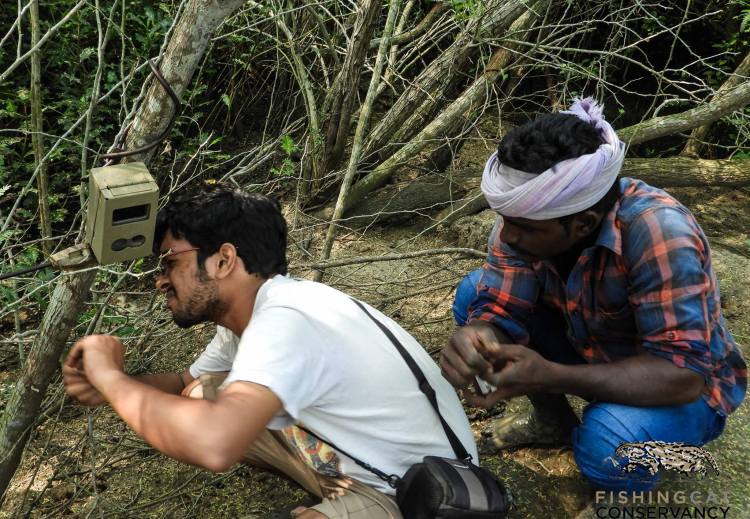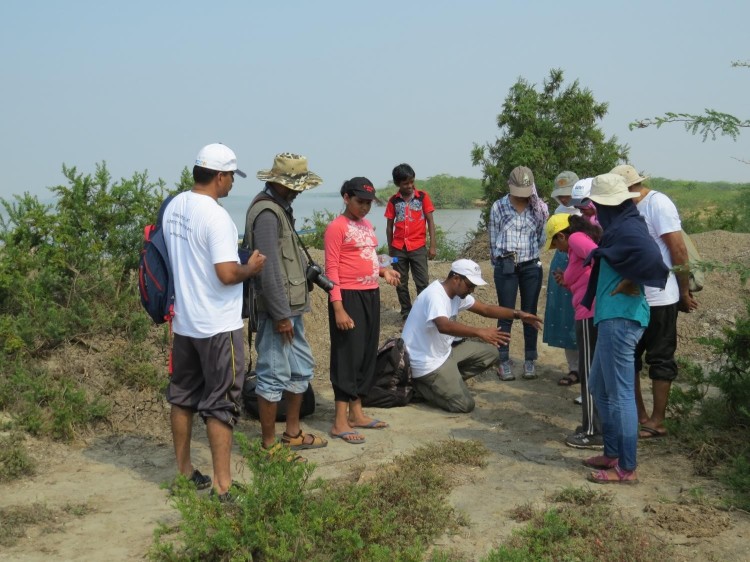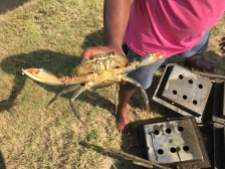
Last week I introduced a fascinating species: the fishing cat (Prionailurus viverrinus). Fishing cats are unique in that they depend almost entirely on water to catch their prey, and even have partially webbed feet. Unfortunately, their reliance on wetlands makes fishing cats vulnerable to habitat loss. One organization working to address this critical threat is the Fishing Cat Conservancy (FCC).
The Beginnings
The story of the FCC’s creation, and of Dr. Ashwin Naidu’s journey, are remarkable in their own right.
Fishing Cat Conservancy co-founder and CEO Dr. Ashwin Naidu telling the story of the FCC’s creation:
Originally an engineering student, Dr. Naidu’s mother saved up just enough money to send him and his father to the Serengeti National Park in Tanzania. During this trip, Dr. Naidu was struck by their guides’ passion and knowledge about their local wildlife.1
Dr. Naidu was so inspired by his experiences in Tanzania that he struggled for, and eventually obtained, an opportunity to study wildlife conservation. In due course, he earned his M.S. and Ph.D. degrees in Arizona by analyzing mountain lion (Puma concolor) poop. While working on his Ph.D., Dr. Naidu noticed that few people were talking about fishing cats – despite the fact that they were endangered and occupied such unique and important habitats.2

Dr. Naidu wanted to help conserve fishing cats in his home country of India. His first order of business was to better understand where fishing cats live; but, since he was still in the United States, his father began visiting sites in India for him. On a visit to a coastal community in the state of Andhra Pradesh, Dr. Naidu’s father connected with a man named Appa Rao: a local legend who had helped the Andhra Pradesh Forest Department restore about 11,000 hectares of mangrove forest in under six years.3
Dr. Naidu’s father and Appa Rao trekked into the mangrove forest, where they photographed fishing cat tracks in an area where few people knew they existed. They now had evidence of a potential fishing cat population in an area where outside researchers did not know they existed.
Another piece of the puzzle came together when a local villager named Santosh saw a sign that the FCC had posted. He contacted Dr. Naidu via Facebook, and over the course of six months Dr. Naidu taught Santosh the essential skills of wildlife biology and conservation. Santosh’s enthusiasm was extraordinary, and he began telling everyone he could about the importance of fishing cats. He even convinced a tribal member and former poacher, Moshi, to stop poaching and use his tracking skills to protect the cats.4

Apart from being a good story, the FCC’s history shows that they have been community-based from the start. This enthusiasm for involving local people in conservation is one of the FCC’s distinguishing features.
Mission
According to their website, the FCC’s mission is: “To promote the long-term survival of fishing cats in the wild through public education, capacity building, and community-based research and conservation.”
The “public education” aspect of their mission goes beyond coastal India to include the whole world. Dr. Naidu is a strong advocate for open-access science, believing that, “All of science should be openly accessible by everyone and anyone.”5
This video, produced by Srikanth Mannepuri, artistically explains the Fishing Cat Conservancy’s mission:
Mangrove Crabs Project
Recall that the greatest threat to fishing cats in Andhra Pradesh is the conversion of mangrove forests to commercial aquaculture ponds. This destroys vital habitat for hundreds of species, and it degrades the forests that local people rely on. Aquaculture ponds in Andhra Pradesh’s mangrove swamps are often not even commercially viable over the long term.6
To combat habitat loss in Andhra Pradesh, the FCC is working with local villagers to develop alternative livelihood programs. One promising initiative is the Mangrove Crabs Project.
There are two species of mangrove crab in the region, commonly known as ‘green’ and ‘orange’ mud crabs, that can be raised in crab-culture boxes without any degradation of natural habitat. Villagers feed the crabs with ‘trash fish’ that costs them nothing, and over time the crabs grow and molt – effectively doubling in size every time they do so.

The FCC is empowering local fishermen with the idea of sustainably harvesting mangrove crabs, on the condition that recipients will plant mangrove trees. As a result, the Mangrove Crabs Project requires no investment on the part of local villagers: everything they earn from selling the crabs will be a net gain.7
In addition, the FCC is hoping to start a sustainable honey harvest from the mangrove forest. Villagers would then be able to make money without destroying natural habitat, while also benefiting more visibly from the ecosystem services offered by mangroves – giving local people an added incentive to protect and restore the forests.8
The FCC is currently testing the Mangrove Crabs Project in the Godavari River Delta, and they have already enjoyed some success. The FCC convinced three local people to get involved in the span of six months, who have learned which crab species thrive in different areas and are working on adding two new field sites.9 The local team members are now looking into improving crab-culture methods so as not to rely on plastic boxes, and to make it easier for the crabs to grow.10
Looking Ahead
The Fishing Cat Conservancy has only been around since 2014, but they have already demonstrated a propensity for innovative, community-based solutions. The Mangrove Crabs Project is evidence of this, but it is only the beginning. The FCC has plans for additional alternative livelihoods programs, including the establishment of the Fishing Cat Conservancy-Trust in India.11
People are ready to learn, get involved, and do amazing things. All they need is an opportunity.
The FCC has also been aggressively pursuing outreach opportunities in India and abroad: teaching people about the importance of fishing cats and mangrove forests, and igniting sparks that lead to positive change. As Dr. Naidu said at The Wildlife Society conference, “People are ready to learn, get involved, and do amazing things. All they need is an opportunity.”12
Giving people the opportunity to make a difference is what the Fishing Cat Conservancy is all about; I hope you will visit their website and learn how you can get involved as well.

References:
- TEDx, 2018; Bineth, Shannon, Parameswaran, & Gaedtke, 2017
- TEDx, 2018
- Bineth et al., 2017; TEDx, 2018
- Bineth et al., 2017
- TEDx, 2018, 7:10.
- P. Tamarapalli, personal communication, October 9, 2018
- P. Tamarapalli, personal communication, October 8, 2018
- A. Naidu, personal communication, January 26, 2019
- https://www.fishingcatconservancy.org/programs
- P. Tamarapalli, personal communication, October 8, 2018
- A. Naidu, personal communication, January 26, 2019
- A. Naidu, personal communication, October 9, 2018




This is great to know there are amazing people in the world. Not easy I can understand but their life for then… This is so nice, Thank you dear Josh, Love, nia
LikeLiked by 1 person
Thank you, Nia! There are many amazing people in this world, even if sometimes it doesn’t seem like it! I’m glad you liked the post :)
LikeLiked by 1 person
Very interesting.
LikeLiked by 1 person
Thanks Nisha! I’m glad you think so.
LikeLiked by 1 person
Awesome story with amazing people. This provided some much needed hope & motivation in many ways. As always, thanks much for sharing and have a great weekend :)
LikeLiked by 1 person
Thanks Takami, I’m glad you liked the post :)
LikeLike
This is such an inspiring story. I also love how they have involved the community, this is what can really make or break a project. If they don’t see value in it then they won’t necessarily change their ways. I’m really glad I found these blog posts. Thank you for sharing 🙂
LikeLiked by 1 person
Thanks for such a great comment, Juliet! More and more conservationists are realizing that they need to have local people on their side to be successful, and the best way to do that is to build genuine, supportive relationships with them.
LikeLiked by 1 person
You are more than welcome! I did a lot of work studying what makes a conservation effort successful in my university days and community involvement is absolutely key to this. I’m going to watch that talk by the CEO now 🙂
LikeLiked by 1 person
Awesome! I think you’ll like Ashwin’s talk :)
LikeLike